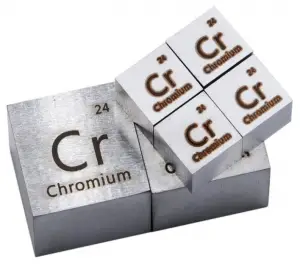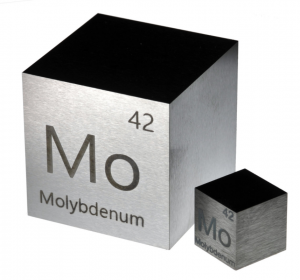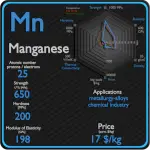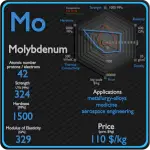This article contains comparison of key thermal and atomic properties of chromium and molybdenum, two comparable chemical elements from the periodic table. It also contains basic descriptions and applications of both elements. Chromium vs Molybdenum.

Chromium and Molybdenum – About Elements


Source: www.luciteria.com
Chromium and Molybdenum – Applications
Chromium
Chromium is one of the most important and indispensable industrial metals because of its hardness and resistance to corrosion. But it is used for more than the production of stainless steel and nonferrous alloys; it is also used to create pigments and chemicals used to process leather. In metallurgy, Chromium increases hardness, strength, and corrosion resistance. The strengthening effect of forming stable metal carbides at the grain boundaries and the strong increase in corrosion resistance made chromium an important alloying material for steel. Generally speaking, the concentration specified for most grades is approximately 4%. This level appears to result in the best balance between hardness and toughness. Chromium plays an important role in the hardening mechanism and is considered irreplaceable. At higher temperatures, chromium contributes increased strength. It is ordinarily used for applications of this nature in conjunction with molybdenum. The resistance of stainless steels is based on passivation. For passivation to occur and remain stable, the Fe-Cr alloy must have a minimum chromium content of about 11% by weight, above which passivity can occur and below which it is impossible.
Molybdenum
About 86% of molybdenum produced is used in metallurgy, with the rest used in chemical applications. The estimated global use is structural steel 35%, stainless steel 25%, chemicals 14%, tool & high-speed steels 9%, cast iron 6%, molybdenum elemental metal 6%, and superalloys 5%. Molybdenum (about 0.50-8.00%) when added to a tool steel makes it more resistant to high temperature. Molybdenum increases hardenability and strength, particularly at high temperatures due to the high melting point of molybdenum. Molybdenum is unique in the extent to which it increases the high-temperature tensile and creep strengths of steel. Molybdenum anodes replace tungsten in certain low voltage X-ray sources for specialized uses such as mammography. The radioactive isotope molybdenum-99 is used to generate technetium-99m, used for medical imaging. The isotope is handled and stored as the molybdate.
Chromium and Molybdenum – Comparison in Table
| Element | Chromium | Molybdenum |
| Density | 7.14 g/cm3 | 10.28 g/cm3 |
| Ultimate Tensile Strength | 550 MPa | 324 MPa |
| Yield Strength | 131 MPa | N/A |
| Young’s Modulus of Elasticity | 279 GPa | 329 GPa |
| Mohs Scale | 8.5 | 5.5 |
| Brinell Hardness | 1120 MPa | 1500 MPa |
| Vickers Hardness | 1060 MPa | 1530 MPa |
| Melting Point | 1907 °C | 2623 °C |
| Boiling Point | 2671 °C | 4639 °C |
| Thermal Conductivity | 93.7 W/mK | 138 W/mK |
| Thermal Expansion Coefficient | 4.9 µm/mK | 4.8 µm/mK |
| Specific Heat | 0.45 J/g K | 0.25 J/g K |
| Heat of Fusion | 16.9 kJ/mol | 32 kJ/mol |
| Heat of Vaporization | 344.3 kJ/mol | 598 kJ/mol |






